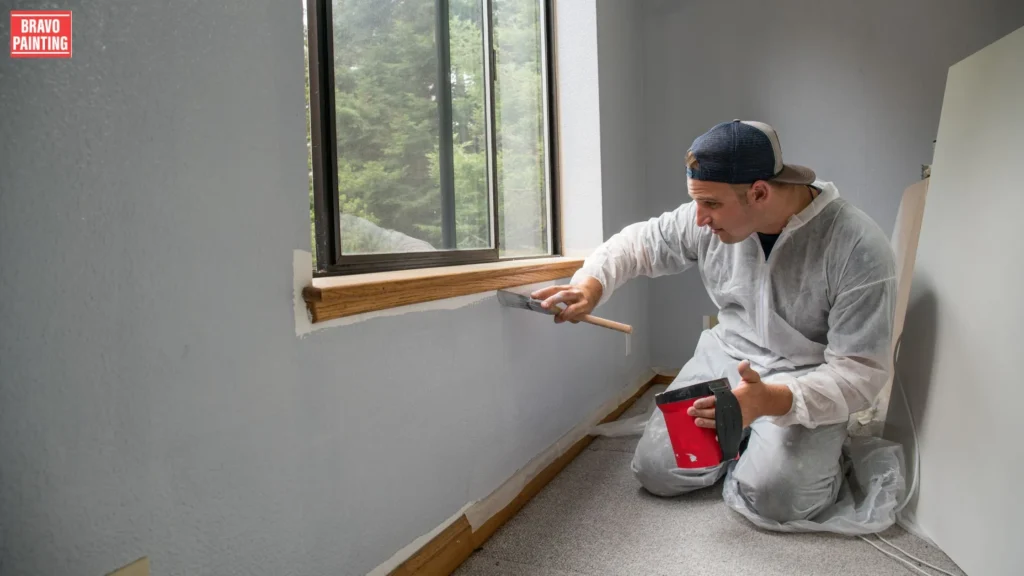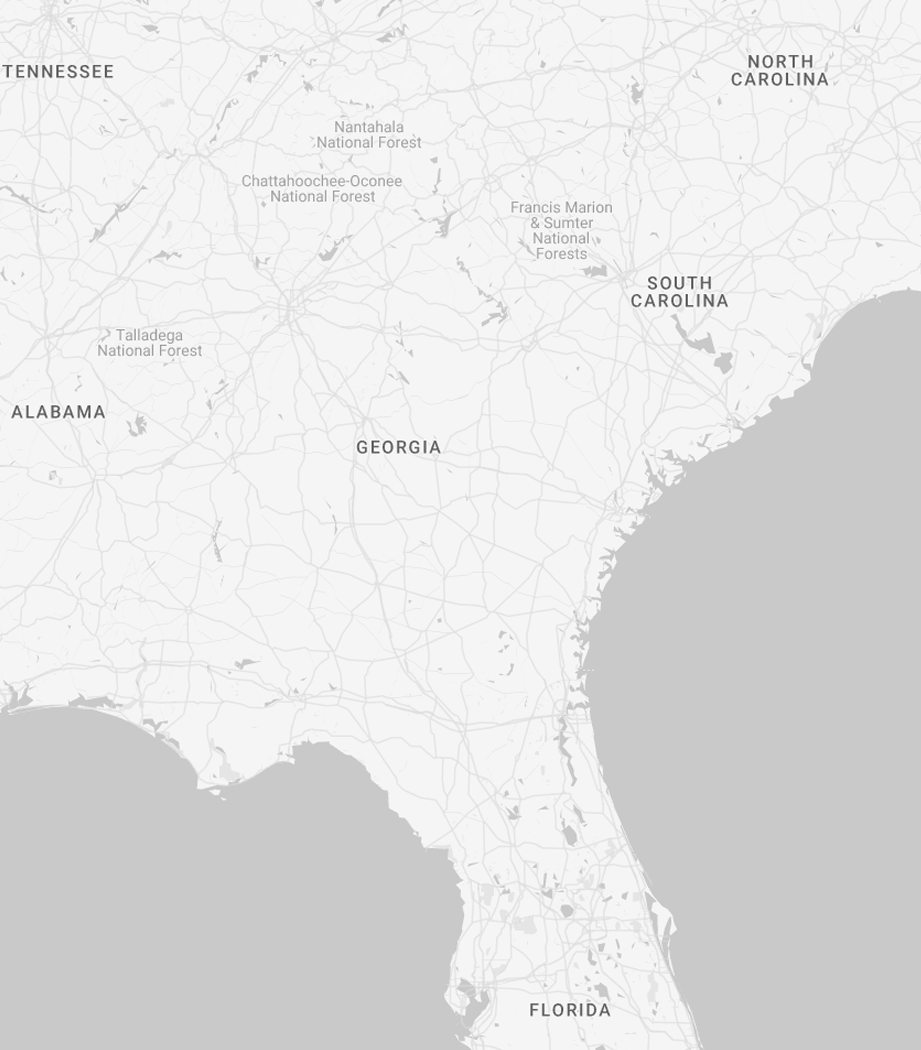While nothing says revitalization like a fresh coat of paint for your commercial business, it can be about as complex to understand the costs associated with interior painting in a commercial business as finding the perfect color palette.
Whether it’s an office or a retail store, what drives those costs is going to determine how you spend your money.
Dive into our in-depth guide to demystify the cost breakdown and make sure your next painting project stays on track financially while achieving that polished look you desire!
Cost Breakdown of Commercial Interior Painting
Commercial interior painting involves many key cost components that may vary significantly.
The first aspect is the material.
These will significantly influence the final cost of your commercial interior painting.
High-quality paint, primers, and even supplies like brushes and rollers can influence your budget.
While good-quality products ensure better durability, they usually come at a premium price.
Labor cost is another critical one.
The experienced painters would be more professional, so there is bound to be a difference in efficiency and quality.
Prices may vary depending on experience or the local market, but getting quotes from several painters is always a good idea.
Additional services, such as wall repairs or decorative finishes, can really enhance your space, but they will add to the bottom line of your commercial interior painting project.
Materials Cost Determination
Commercial interior painting determines material cost, which is very important.
Materials determine the amount of money a person may spend to complete a certain job.
High-quality paints and primers tend to be pricier but offer better coverage and durability.
Spending extra upfront saves money in the long run.
Consider the finish you need for your space.
A matte finish is less expensive than a glossy finish, which may have special applications or require more coats.
Each choice determines aesthetics and budget.
To achieve the best finish, ensure that materials such as sealants or primers enhance adhesion to the paint.
Add-ons in this regard are required to achieve professional-looking surfaces and ensure longevity as well as ease of maintenance in painted surfaces.
Knowing Labor Costs
Labor costs consume a large percentage of the cost of commercial interior painting.
These costs will depend on the location, complexity of the project, and painters’ experience level.
More experience means more for the painters because of their experience.
Another labor cost area involves preparing the surface when applying the paint.
Any surface needs to be prepared so that the finish is smooth and lasts longer.
This could even add more personnel hours to the costs when making the drying wall or prepping a surface to add primer.
Another aspect of a job that determines how many personnel will be needed involves how long the job will take.
Typically, it takes longer to require more personnel.
The overall labor cost of your commercial painting project will also be affected by how long a job will take.
Factors That Affect the Costs of Commercial Interior Painting

Some factors influence commercial interior painting costs.
The conditions of the building are another factor.
A building might have walls that require extensive prep work through patching and sanding, which increases labor costs as well as material purchases.
Another determining factor is the type of paint finishes.
High-quality paints tend to be more expensive but are durable and quite attractive.
Specialized finishes for specific environments also contribute to the cost.
Other detailed wallpapers or textures increase the cost because it’s a personalized job.
It requires additional preparation and expertise, hence making it more expensive for you.
Building Condition and Prep Work
The condition of the building is one of the cost factors when it comes to commercial interior painting.
Older buildings would require more extensive repairs.
Cracked walls, peeling paint, or water damage must be addressed before any new coat is applied.
Another factor involved in the pricing of preparing work is cleaning surfaces, filling up gaps, and priming areas before painting to create a suitable surface for application.
Prep work is not unimportant because it’s labor-intensive as well as time-consuming while trying to achieve a proper finish.
Failure to prepare may result in unexceptional results and costly aftertouches.
Time spent with the right preparation pays off by serving longer on your paint, as it improves appearance with enhanced durability.
Types of Paint Finishes
To determine the right paint finish for any commercial interior project, different kinds of paints make all the difference in appearance, durability, as well as maintenance.
Most commonly, the common types range between matte, satin, semi-gloss, and glossy.
This is a good finish for those who want a smooth look that covers imperfections very well.
However, they are not as resistant to stains and require more frequent touch-ups.
Satin finishes offer a bit of sheen and remain easy to clean, making them ideal for high-traffic areas.
Spaces requiring better durability might need semi-gloss or gloss finishes.
This is because semi-gloss and gloss reflect light properly and are relatively easy to wipe down; however, they will easily accent imperfections in the walls if improperly applied.
So, based on functionality and design intent in your commercial space, the finish best matches either goal.
Other Services and Customizations
Additional services may increase the price of commercial interior painting.
Most businesses opt for special finishes, textures, and patterns that make the space more appealing.
Custom requirements require the use of more skilled labor and time; therefore, prices are higher.
More than just an application of paint, services can include even drywall repair and surface preparation or decorative elements such as murals or accent walls.
All these add a layer to your project and enhance aesthetic value, but when dealing with budget considerations, they can quickly balloon.
You should communicate your vision clearly to your contractors so you get accurate estimates and balance quality and costs effectively during the painting process.
Tailoring painting means you create inviting and reflective atmospheres for your brand’s identity.
Commercial vs. Residential Painting Cost Comparison
Commercial and residential job costs vary quite a lot when talking about painting.
Commercial interior painting is going to involve more space in most cases, with bigger ceilings requiring more material and special equipment.
So, overall expenses might be bigger compared to small residential work.
Another difference is in labor costs.
Commercial painters charge more for the work because of the complexity involved in working within business settings, including possible disruptions during operational hours.
Residential painters work in a generally quieter setting where time frames are more flexible.
Another difference in cost factor lies in the paint finishes.
For instance, some can be used for commercial purposes, while others cannot be used for residential purposes.
Businesses may need a harder finish to sustain a heavier use schedule, while homeowners prefer to look pretty than to last, hence adding additional costs to their materials.
Important Differences in Cost Factors
Commercial interior painting is significantly different from the projects conducted at homes solely based on the scale and complexity of the project.
For example, commercial places normally demand more material, which increases the expenses.
It depends upon the type of building sometimes as well.
Sometimes, specialized equipment or techniques are necessary.
Another key difference lies in labor costs.
Experienced workers are usually paid more for being skilled and having experience in commercial installations.
This is partly a result of the requirements for speed and efficiency associated with minimizing business disruption in such an environment.
There is no traditional project timeline.
Businesses may want turnaround times to be as quick as possible to get things up and running; therefore, pricing structures may have to adjust according to the contractor changing their schedule to meet these needs.
Knowing the differences when budgeting for your commercial painting needs is important.
Understanding the Value of Professional Commercial Painting
Professional commercial painting will give a significant boost to your business’s outlook.
A well-painted interior attracts customers and makes employees happy.
First impressions are crucial, and they speak volumes of professionalism with a fresh coat of paint.
Professional people bring expertise to the work.
They know the little things that different materials do and the techniques used, so they avoid making costly mistakes.
Their experience will help you manage your project efficiently with minimal disruption to your day-to-day activities.
Besides, most professionals obtain quality materials at a reasonable price.
That implies that you receive quality products for years without the cost of up-to-date maintenance due to high prices.
When considering longevity and beauty, hiring professionals will also save you cash to repay over time.
Saving on Commercial Interior Painting Cost Tips
Maximize efficiency.
Start at off-peak hours so you are not disturbing people too much and can wrap things up quickly.
This saves you not only on labor time but also on cost.
Buy materials in bulk.
You may get discounts on suppliers of paint and supplies, but it also helps you in ensuring uniformity in your project.
Never shy away from negotiating with contractors.
Bring up your budget upfront and clarify what you need very clearly.
Most painters will work with set parameters or offer flexible pricing options that work out perfectly for both parties without compromising on quality.
Operational Efficiency without Compromise on Quality
Well-planned commercial interior painting depends on planning.
Start by assessing the workspace and noting areas that require work.
A well-prepared site reduces downtime and makes the work smooth, enabling the painters to focus on the kind of quality results delivered.
The proper use of good materials is another efficient means to paint.
These often require fewer coats for better coverage, which eventually saves them time in the long run.
Top supplies will always give you a finish that lasts for a while with tear and wear, too.
Skilled labor will maximize efficiency without reducing quality.
An experienced painter knows techniques that accelerate his work while maintaining superior standards, ensuring your project stays within budget and timeline constraints.
Negotiation with Painting Contractors to Save More
Negotiating with painting contractors will bring you great savings.
Begin by gathering multiple quotes from different companies.
This will give you a benchmark and leverage during discussions.
Be transparent about the budget and clearly express needs.
Many of the contractors appreciate honest, clear communication and may thus offer discounts or suggest less expensive alternatives that fit well within their budget.
Feel free to ask for overcoats or touch-ups at cheaper prices, particularly if you are entering a larger project.
Building rapport with the contractor also leads to better pricing; they want not only immediate profit but long-term relationships as well.
Conclusion
An essential factor that a business owner must know in commercial interior painting is the cost involved.
From the bottom line, knowledge of material and labor will allow you to make an informed decision regarding your budget.
Keep in mind that the conditions of the building, the type of paint finish, and any other added services contribute much to the total cost.
All projects are unique, with specific solutions designed to obtain the best-desired results.
Professional painting services ensure great results and, above all, save money.
A good painting job beautifies a place but can even lift the morale of one’s workforce and attract better clients.
Wasting it well makes all the difference in any commercial space.
FAQs
What are some of the factors that influence commercial interior painting pricing?
Cost for commercial interior painting factors depends on the size, height, type of paint chosen and materials, surface requirements for preparation, and how much labor is involved in painting. Other factors will also include the complexity and difficulties in accessing the places and special finishes or coating requirements.
How do space size and height in a business space impact the cost of painting?
The bigger your space is, the greater the square footage, the more paint and person-hours will be utilized. Therefore, it results in more cost. If you have tall walls or ceilings, it requires greater equipment, for example, using scaffolding or lifts; it requires more person-hours to do, and consequently, increases the overall bill.
Which are the most common commercial interior paints, and at what cost?
Acrylic or epoxy paint is commonly used on commercial sites as it lasts much longer in busy places. Paints come in a variety of qualities, brands, finish types, matte, semi-gloss, etc.; the quality is reflected by durability cov, usage, and expense.
Why is surface preparation added to the overall cost? What does surface preparation actually mean?
Surface preparation helps achieve a uniform, lasting finish. Cleaning, sanding, priming, and repairing may be part of the procedure, depending on the condition of the walls. Poor surface preparation often leads to a blotched or peeling paint that increases the labor and materials required to complete the project, increasing the total cost of the project.
Do over-labor costs apply to painting occupied commercial spaces?
Yes, working overtime or special partitions required in painting occupied commercial spaces increases labor costs, as well as proper ventilation and clean-up after each work session in occupied areas.
Blog, Commercial Interior Painting

